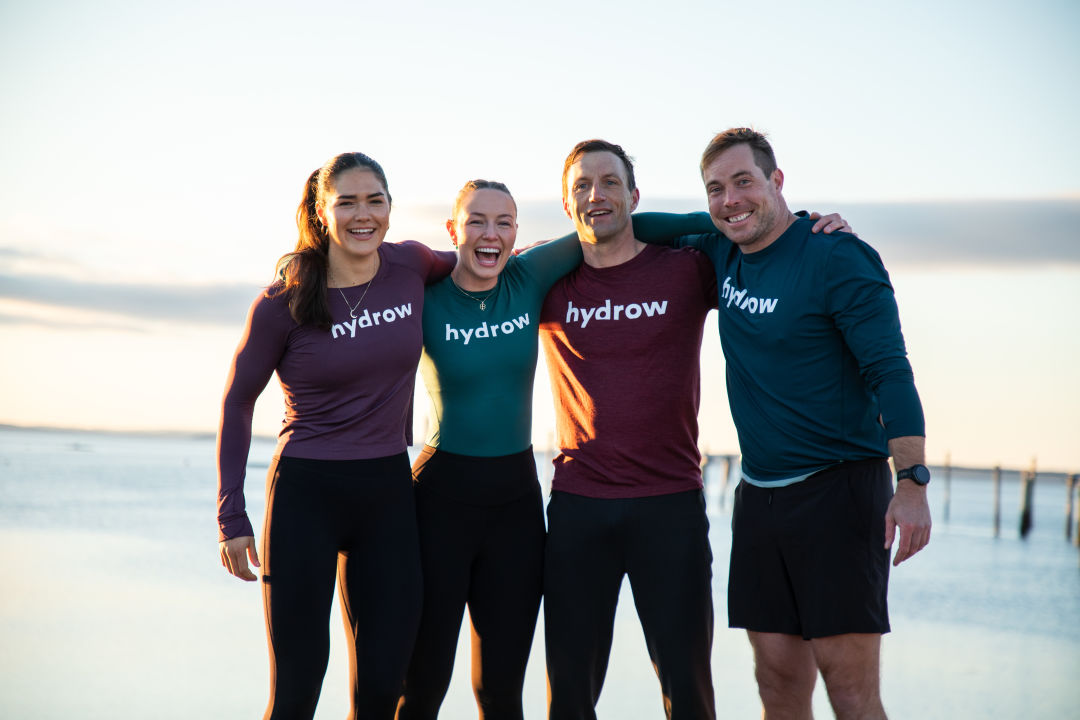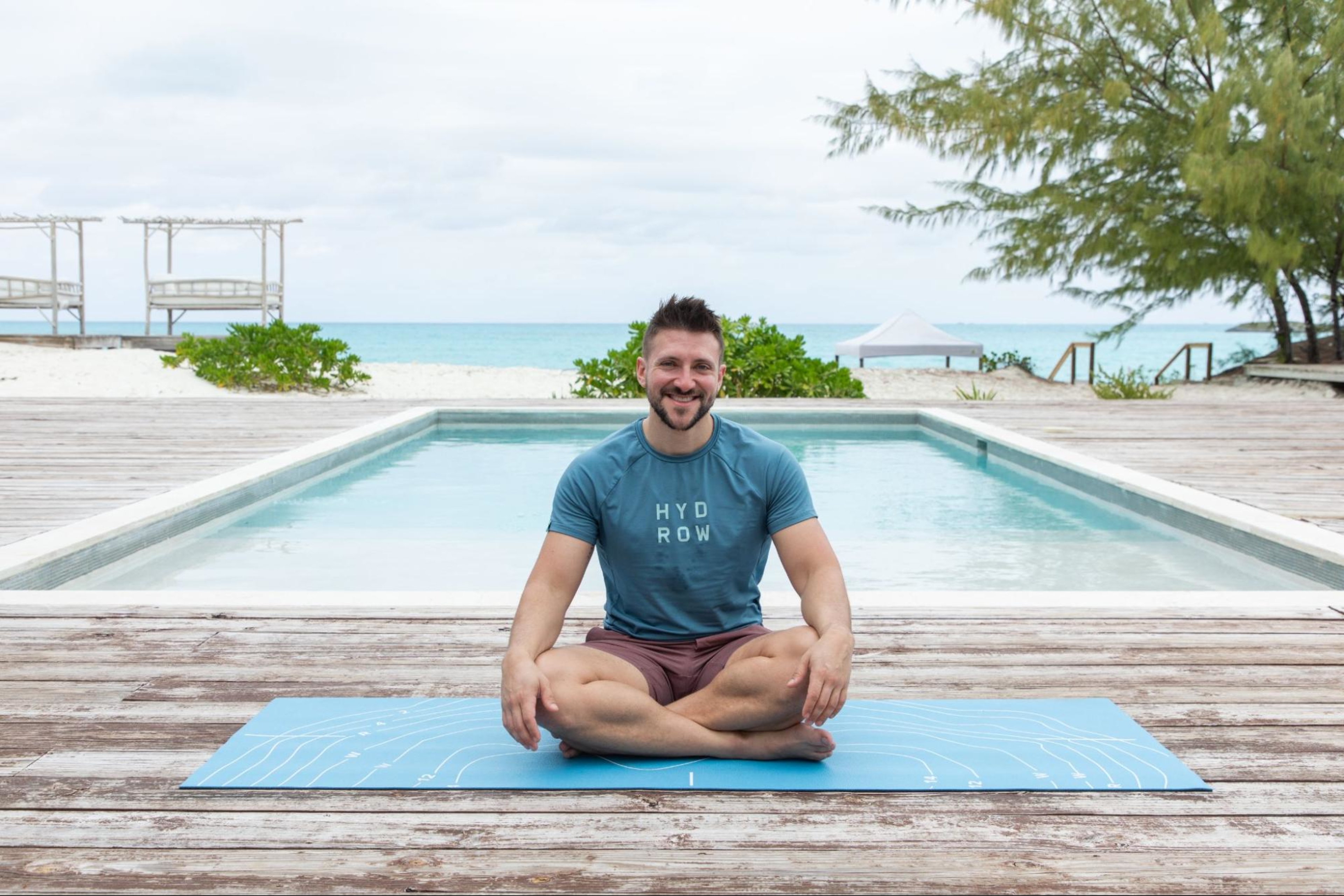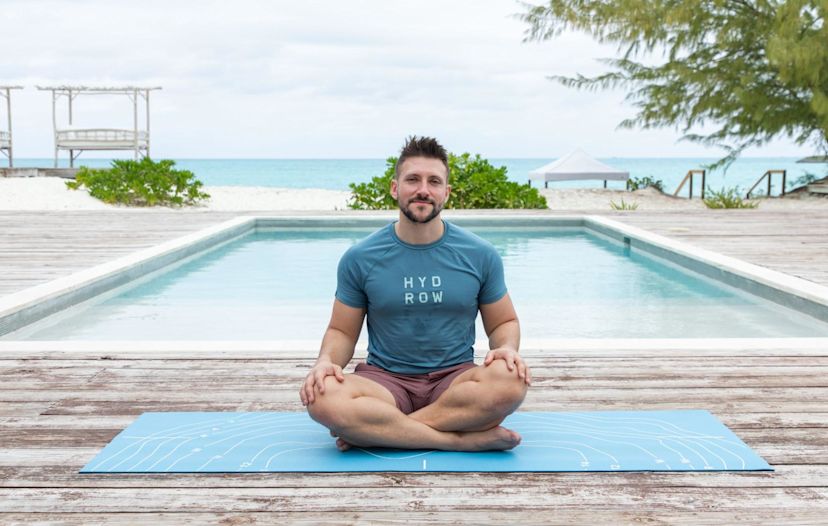20 Yoga Poses for Beginners and Their Benefits

Getting started as a beginner in yoga can feel a bit like learning like a new language—and sometimes that’s literally true, with yoga teachers instructing poses in their traditional Sanskrit names!
Want to familiarize yourself with common poses you’ll encounter in different types of yoga classes? Here is a list of 20 yoga poses for beginners (presented in both English and Sanskrit) and how you can benefit from each one:
Let’s jump in!
1. Child’s pose (Balasana)
This is a pose that is frequently offered as a grounding position at the start of practice, or as a resting shape during the yoga flow. Child's pose serves as a gentle forward fold, and for some people it can be an effective stretch for the quads, the hips, and the tops of the feet and ankles. By reaching the arms forward, child’s pose can become a stretch for the side body and shoulders.
Beginners should be aware that while child’s pose is described as a resting pose, it can still feel uncomfortable. Students can modify or support the pose with blocks or blankets as needed.
2. Mountain pose (Tadasana)
Tadasana is a foundational pose that informs so much of yoga alignment generally, making it worth focusing on and refining. For example, the actions of the legs standing in mountain pose are the same actions we want to find in the lifted leg of Warrior III.
In mountain pose, we can practice finding a neutral pelvis and spine, which allows us to experience the contrast when we do things like twist or backbend. Tadasana might look like someone just standing, but really there’s so much to learn about proper alignment in yoga from this one shape. Beginners should not overlook the benefits of truly exploring and learning this pose.
3. Downward-facing dog (Adho Mukha Svanasana)
This might be the first pose that springs to mind when you think of yoga—and for good reason! Downdog is part of the traditional Sun Salutation sequence and serves a few important functions.
First, it is a forward fold that can help improve flexibility down the backs of the legs, including your hamstrings, calves, and ankles. Second, the position of arms overhead is often a missing piece of shoulder mobility for many people—how often during the day are you reaching your arms up above your head?
Downward-facing dog also helps strengthen the wrists by placing the body in a weight-bearing position on your hands. There are many yoga poses that benefit from the increased wrist flexibility and strength (think crow pose or side plank) that this yoga pose can help cultivate.
4. Cat-cow stretch (Marjaryasana-Bitilasana)
A staple of the warmup period of yoga sequences, cat-cow stretches are a way to open your spine and even out your breath. Performed from a tabletop position on hands and knees, cow pose is an accessible backbend (spinal extension) linked to an inhale, and cat pose is a rounded spine position (flexion) linked to an exhale.
Because so many shapes in yoga involve purposeful flexion or extension of the spine, cat-cow is a great primer for those actions that appear later in more challenging poses.
Related blog: Can You Do Yoga Every Day?
5. Forward bend (Uttanasana)
This pose is for all those yoga skeptics who think they’ll never be able to touch their toes. There are several variations on forward folds within yoga, each of which can improve hamstring flexibility and offer a stretch for the back body.
This variation is a standing forward fold aided by gravity. Toward the end of a yoga practice, there is an emphasis on forward folds because they are calming for the body and signal that the time for rest is approaching.
Beginners should feel empowered to bend their knees as much as they need to within a forward fold, bringing the ribs closer to the thighs. This makes the pose less about hamstring flexibility and more about an even lengthening across the back body.
6. Warrior I (Virabhadrasana I)
A demanding pose, Warrior I is a great way to build strength in the legs and core. Like other lunging postures, it provides an opening in the front of the hip of the back leg. Taking the arms up overhead helps build strength and openness in the shoulders and lats.
In general, beginners should focus on getting heavy and grounded in the lower body while finding lightness in the upper body. One modification for this shape is to lift the back heel up off the ground and take a high lunge pose instead. Traditionally, this is a shape that is held for several rounds of breath; learning to calmly breathe and focus on the correct alignment actions in this challenging pose is a terrific way to build the sort of mental resilience and focus that is characteristic of a yoga practice.

Explore Hydrow’s library of yoga workouts from around the world.
7. Warrior II (Virabhadrasana II)
Different from Warrior I in that the front hip is more open and externally rotated, Warrior II has similar benefits to strength and focus. The action of externally rotating the front leg (i.e., spinning the inner thigh open toward the other thigh) is found in many other poses. For example, this is the action that keeps the standing leg on straight in half moon and allows the unfurling of the hips and upper body.
Beginners should be sure to check in on their back arm, as it often drops below the level of the front arm. The aim is equal extension through both arms, with an energetic press down through the palms to lift through the crown of the skull. A soft gaze over the front middle finger can be a helpful tool to focus and stay calm in the pose.
8. Triangle pose (Trikonasana)
As mentioned in Warrior II, there is a whole class of poses that feature an externally rotated front hip. Triangle pose is a foundational shape from this class of poses that promotes flexibility along the inner leg line and hips, as well a stretch for the side body and twist in the upper body.
Beginners may experience this pose as a challenge to their balance as well, especially if they take their gaze up towards the top hand.
9. Cobra pose (Bhujangasana)
Cobra pose is a backbend performed while lying down on the stomach, and may be offered as a more accessible alternative to upward-facing dog. Cobra pose is a terrific way to strengthen the upper back and thoracic spine region.
Beginners should focus on dragging the hands slightly back so that the backbend originates more from a pulling action than a pushing action. Backbends like Cobra Pose are useful for opening the chest and shoulders, areas of the body that can become closed off due to stress or extended periods of sitting.
Related blog: What Are the Benefits of Yoga?
10. Bridge pose (Setu Bandhasana)
Another backbend, bridge pose is performed while lying down on the back with knees bent. The benefit of supine backbends like bridge pose is that the legs can be recruited to assist in the action. As a result, this shape can help strengthen the glutes and legs along with the back body.
Beginners should remember to breathe while in this shape. Not only will this give you more space and lift, but it will also keep your body calm and result in a safer backbend. It takes time and repetition to find a full, calm breath in deep backbends like bridge pose, but in time they can become poses that are energizing and help relieve stress.
11. Tree pose (Vrksasana)
The other candidate for the pose most associated with yoga, tree pose is a wonderfully useful and accessible entry into the practice for beginners. Beginners should focus on finding a “drishti”—a non-moving gaze point to focus on—and steadying their breath to achieve balance.
Of note, the lifted foot does not necessarily need to rest on the inner thigh: it can be placed anywhere along the standing leg except for right against the knee (we try to avoid pressure directly onto the knee joint). So, if balance is challenging, try starting by just placing the heel of the lifted food onto the ankle of the standing leg. You can do this pose just about anywhere, so there’s no excuse not to practice!
12. Seated forward bend (Paschimottanasana)
Paschimottanasana has all the same benefits as Uttanasana above, but may be even more calming and grounding as it is taken from a seated position. Beginners should consider elevating their hips by sitting on a blanket or pillow, as this makes the fold more accessible.
In a seated fold, focus on cinching the two points between the heels and the sitting bones to lengthen the upper body further. Seek more length on every inhale, and fold more deeply on every exhale.
13. Pigeon pose (Eka Pada Rajakapotasana)
A crowd pleaser, pigeon pose is a deeply calming stretch for the outer hips. As a forward fold, it can also provide some relief for tension in the lower back and an opening for the side body.
There is a good deal of individualization when it comes to the setup of this pose, so beginners should get some feedback from a yoga teacher or be prepared to experiment with props to find an expression of this shape that feels good in their body.
Ideally, the hips should be more or less level with one another, using a blanket, pillow or block to support the hips into this even position. Some support under the forehead is a helpful way to allow the neck to fully relax in the pose.
Related blog: Should You Do Yoga Before or After Your Workout?
14. Low lunge pose (Anjaneyasana)
An incredible stretch for the hip flexors, low lunge is the quintessential counter to a culture of endless sitting. Like Warrior I, this pose also takes the arms up alongside the ears and provides an opening for the shoulders. Low lunge is sometimes instructed as a backbend, resulting in a massive stretch for the front body from the press of the top of the back foot up the extended back leg and hip, through the core and chest and up into the reach of the fingers.
Beginners may decide to support their back knee with a blanket or by folding the side of the yoga mat in.
15. Happy baby pose (Ananda Balasana)
This pose is frequently offered as the penultimate pose just before final rest in a yoga sequence. The benefits of happy baby are not simply a stretch for the lower back, groin, and inner legs, but also a feeling of relaxation that comes from a gentle inversion of the limbs above the body.
Beginners should not feel pressured to reach for their outer ankles if it feels inaccessible; instead, you can reach for the knees or shins to find the same action of drawing the legs in towards the body.
16. Legs-up-the-wall pose (Viparita Karani)
Taking the legs up a wall for Viparita Karani is a gentle and safe way to find the benefits of an inversion pose in yoga. Going upside-down promotes circulation and reorients inner organs in a way that can be therapeutic. It may also serve as relief for tired legs, especially at the end of an intense practice.
This pose can also be taken without the support of a wall by propping the low back onto a block for a supported bridge pose and lifting the legs skyward from there. Similar to happy baby, this pose is quite calming and typically offered just before rest.
17. Chair pose (Utkatasana)
Part of a traditional Sun Salutation B, chair pose works the legs and core whether as a pose held on its own or as a transition between standing and folding. This is another pose where the arms are held up overhead, adding the benefits to shoulder mobility and endurance.
Chair pose is sometimes taught with the feet together, which may present an opportunity for beginners to work their balance.
18. Reclined bound angle pose (Supta Baddha Konasana)
A relaxing hip-opener, the intensity of Supta Baddha Konasana can be dialed up or down with the support of blocks under the legs. Bound angle pose is also taught as a seated fold, but the reclined variation tends to be a bit more passive. This is a great alternative or addition to a wide straddle fold for those looking to get a stretch for the inner legs and groin.
19. Crow pose (Bakasana)
A challenging arm balance, crow pose may not be accessible for every beginner, but it’s important to know about and work towards as you progress in your yoga practice. At first glance, it may look like a total strength-based posture, but in time. you learn how specific actions and proper alignment make all the difference in whether or not your crow flies.
This pose is great for building strength through the core, wrists, and lats. It also helps promote better balancing, which most of us intuitively do on our feet but is much trickier on our hands. Most of all, seeing progress on this pose can be very motivating for a beginner.
20. Savasana (corpse pose)
We’ve saved the most important pose for last! The major purpose of every pose listed above is to cultivate a focused effort and presence, so that by the time we arrive at the end of our practice, we are physically and mentally prepared for rest. Savasana is traditionally legs long and arms relaxed, but in modern styles, practitioners are often encouraged to take any shape that is comfortable and supportive enough to deeply rest in.
Looks can be deceiving: This pose might make beginners feel more uncomfortable than any other, especially if they are unused to waking periods of quiet rest. It may take a bit of time to learn how to allow yourself to rest. That’s natural in a modern world that demands productivity and drives us to distraction. Let the experience of Savasana be whatever it is, knowing that it may evolve over time.
Try beginner-friendly yoga with Hydrow
There are many, many more poses than just these 20, and you can spend a whole lifetime exploring the impact of these different shapes on your body and your mind. Yoga is a lifelong practice, and it is fascinating to observe how the most familiar poses can feel vastly different from one day to the next. We all start as beginners, and a beginners mindset continues to serve us well as well even as we make progress.
Whether you’re new to yoga or want to deepen your practice, Hydrow’s yoga library offers guided workouts designed to help you build strength, improve mobility, and bring calm to your day.
Explore Hydrow’s yoga workouts today.

Explore Hydrow’s library of 5,000+ rowing, circuit training, yoga, Pilates, and mobility workouts.




